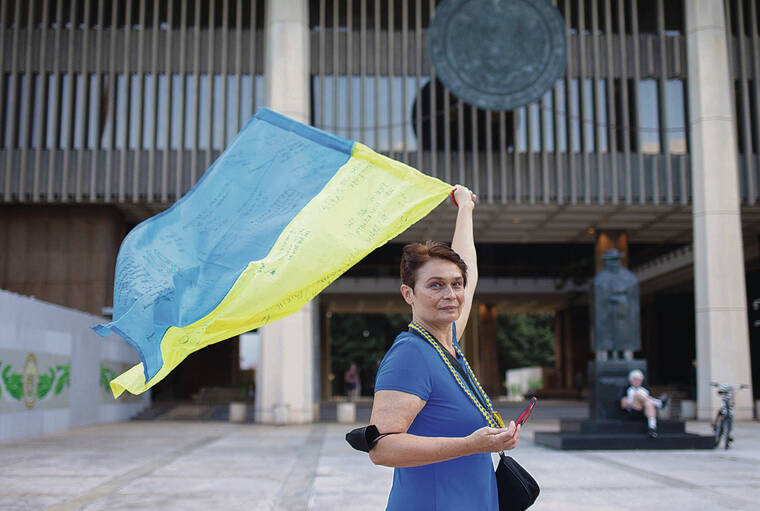Until recently, nations of varying ideology respected the balance between political and economic interests to ensure peace. Russian aggression puts the U.S. in an economic war, pitting our support for freedom against our desire for lower gas and commodity prices. Alarmingly, this hostility is being perpetrated by a global superpower with fully capable nuclear weapons.
The Ukraine war has spawned another unprecedented refugee crisis. In fact, this crisis has considerable precedent. Our societies’ neglect of foreign governments’ need to disenfranchise specific groups of people, gain or maintain economic power, or silence opposition has produced more than 82 million refugees as of 2020, with figures likely to increase this year.
Why be concerned about global issues when Hawaii has, by some measures, the highest cost of living in the nation? Unknown to many, displaced persons have already arrived, and resources and agencies are being deployed. More importantly, our community was built on a long history of immigrant contributions.
The refugee resettlement process is complex and protracted. Multiple federal and state agencies, along with local resettlement agencies, such as Pacific Gateway Center (PGC), lead America’s domestic humanitarian refugee work.
After an overseas application, stringent security and vetting processes follow and may take four years. Approved applicants are interviewed and vetted again by the Department of Homeland Security for a final determination before being assigned to a national refugee resettlement agency, such as the U.S. Committee for Refugees and Immigrants (USCRI) for placement.
Refugees will be a reality for some time. Russian belligerence may spark additional migrations from other autocratic, populist or oppressive regimes. Moreover, worldwide, more than 400 million people live within 6 feet of the high-water line, meaning hundreds of millions to be displaced by rising sea levels in the coming decades. The low-lying atolls of our Pacific Island neighbors are particularly susceptible to climate migration.
How do refugees get to Hawaii? The term “refugee” refers to a specific status. The U.S. grants specific statuses with a suite of associated immigration benefits depending on the situation. Refugees are typically assigned to Hawaii. Once assigned, PGC administers the federal Reception and Placement program to cover basic needs as well as the Match Grant program for job placement and retention to support self-sufficiency. Resettlement agencies, such as ours, also reunite those with familial ties in our area.
Successful and stable resettlement requires broad community support. Hawaii’s designated refugee coordinator is part of the state’s Office of Community Services (OCS). OCS also contracts with Child and Family Services, a local nonprofit, to administer refugee services. Local nonprofits administering legal representation and immigration assistance include the University of Hawaii-Manoa Refugee and Immigration Law Clinic, Catholic Charities Hawaii, The Legal Clinic, and Legal Aid of Hawaii. Federally qualified community health centers offer medical support along with other valued public and private sector agencies.
Since 1973, the Pacific Gateway Center has successfully resettled hundreds of refugees, primarily in response to crises in Southeast Asia and human trafficking cases. PGC has been a partner affiliate for 25 years to the USCRI, a network of national voluntary agencies.
On April 19, the federal government approved temporary protected status (TPS) for Ukrainians already in the U.S. as of April 11, which allows for work authorization. Those displaced will require assistance with filing paperwork and associated fees, as well as employment placement, housing and other core needs.
The displaced and the uprooted are not the least among us. Their skills, energy and talents built America, and we can help ourselves and help rebuild their lives with dignity and hope if we create opportunities for them.
En Young is executive director of the Pacific Gateway Center.

